This document provides information about monolithic refractories produced at Vesuvius India Ltd. It discusses the advantages of monolithic refractories over precast refractories. It also categorizes and describes different types of monolithic refractories like low cement castables, conventional castables, ultra low cement castables and no cement castables. Furthermore, it lists the raw materials used and their properties, including various aluminas, alumino silicates, silica based materials, zircon sand and insulating materials. The document aims to give an overview of the manufacturing and applications of monolithic refractories.



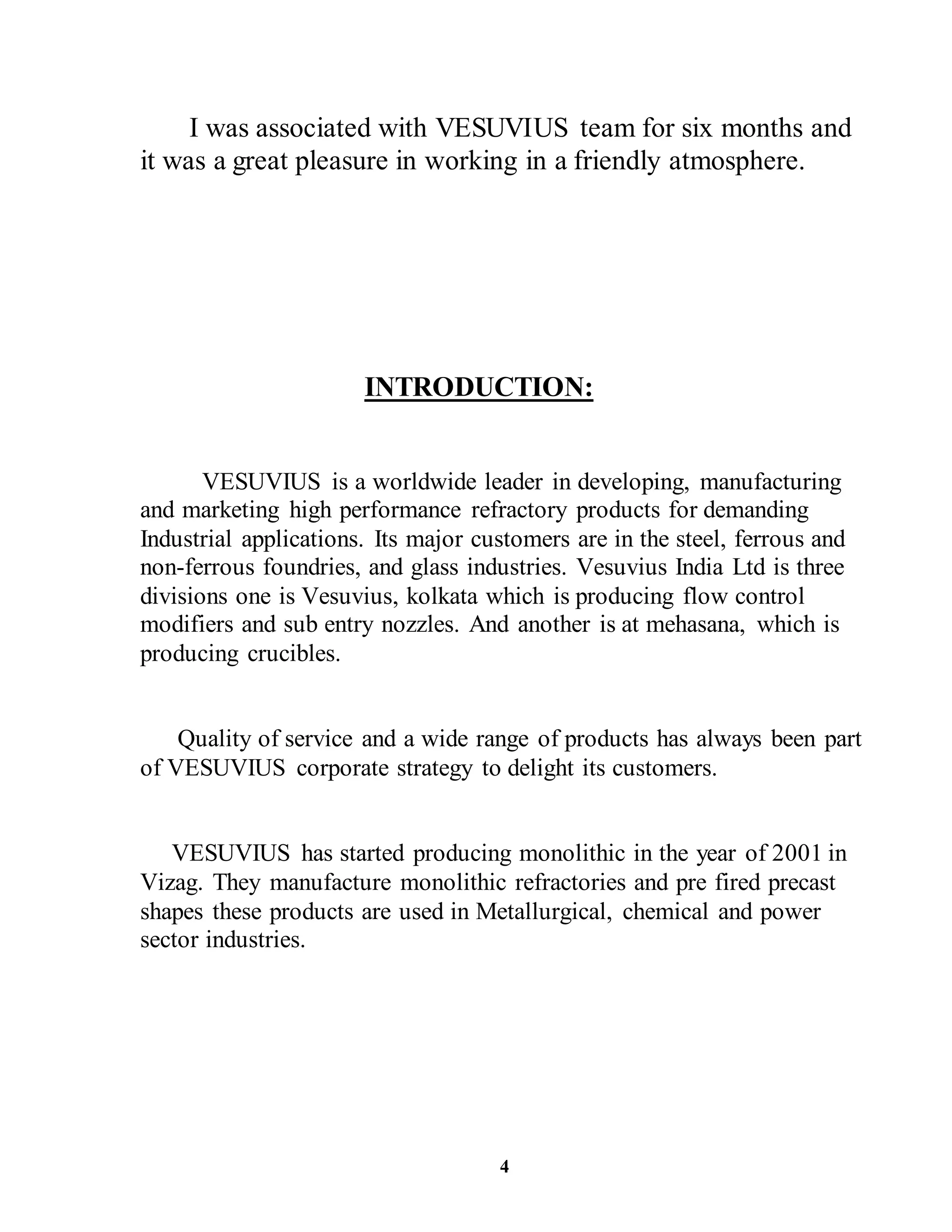

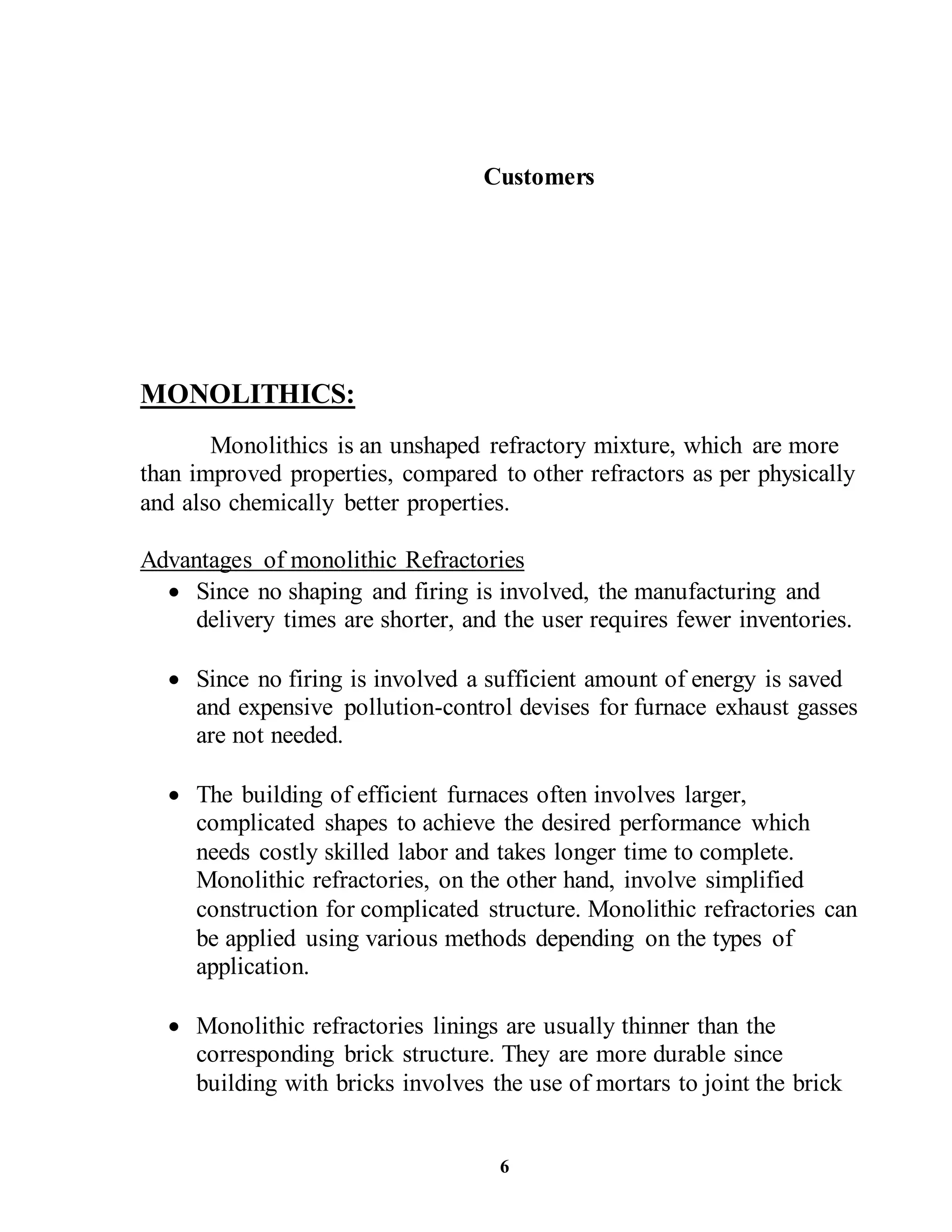
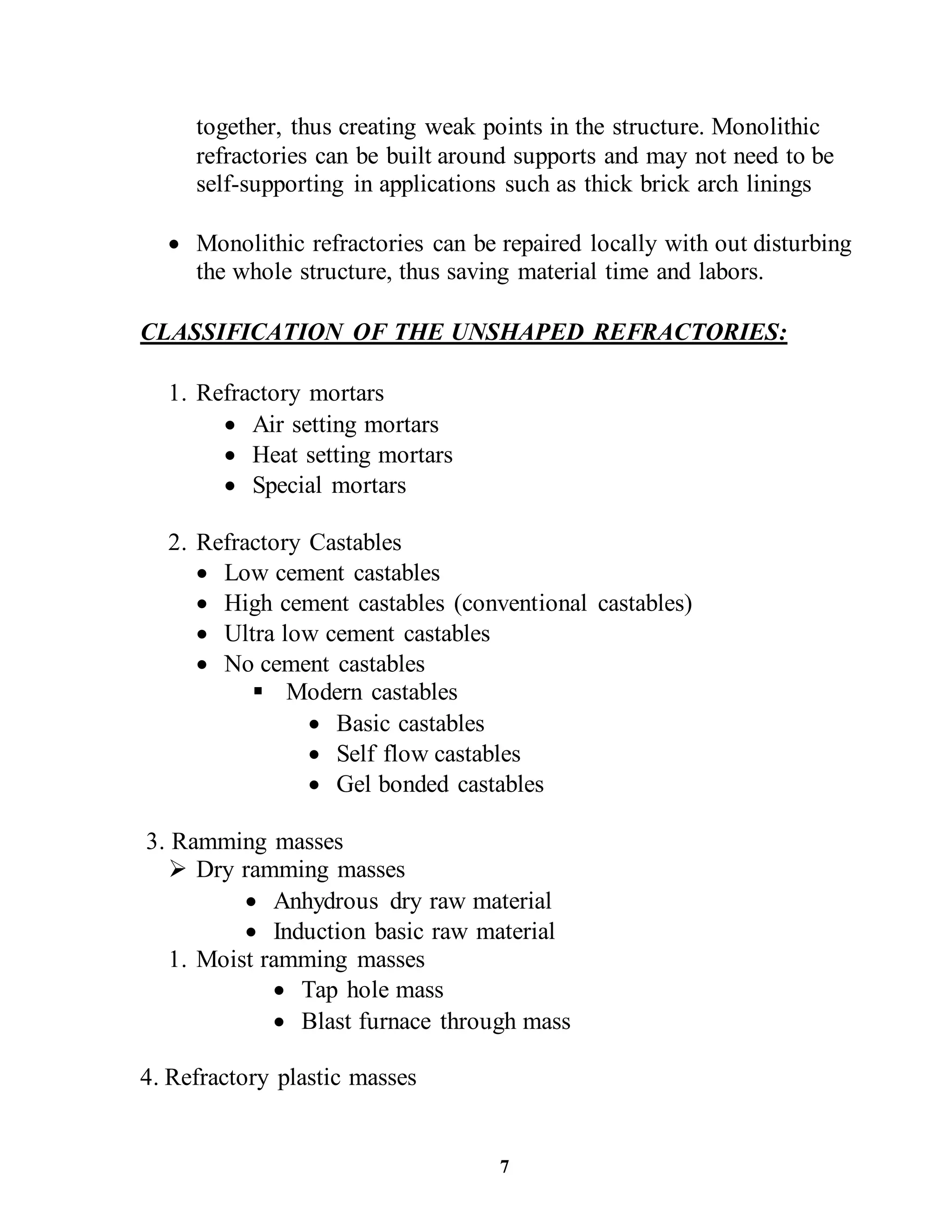
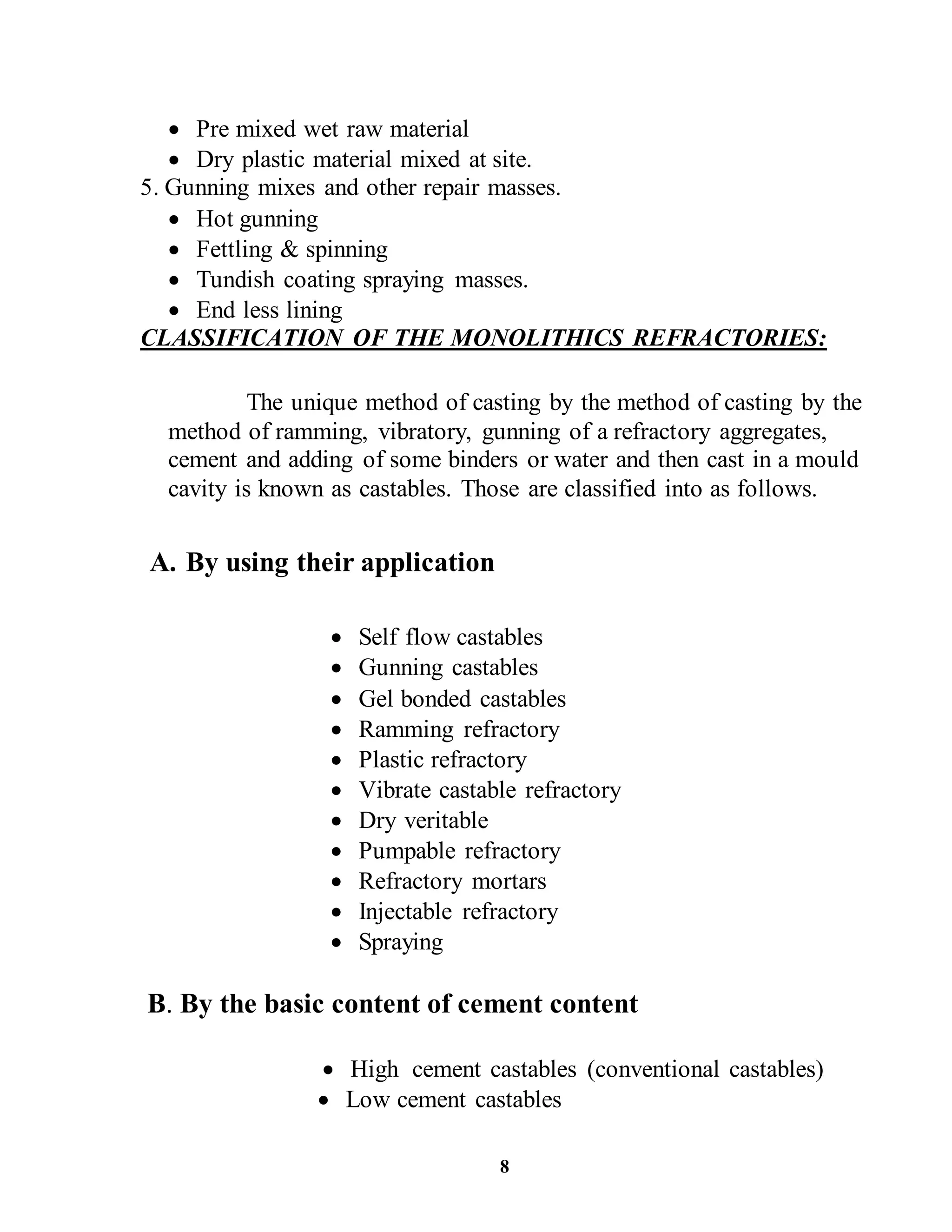



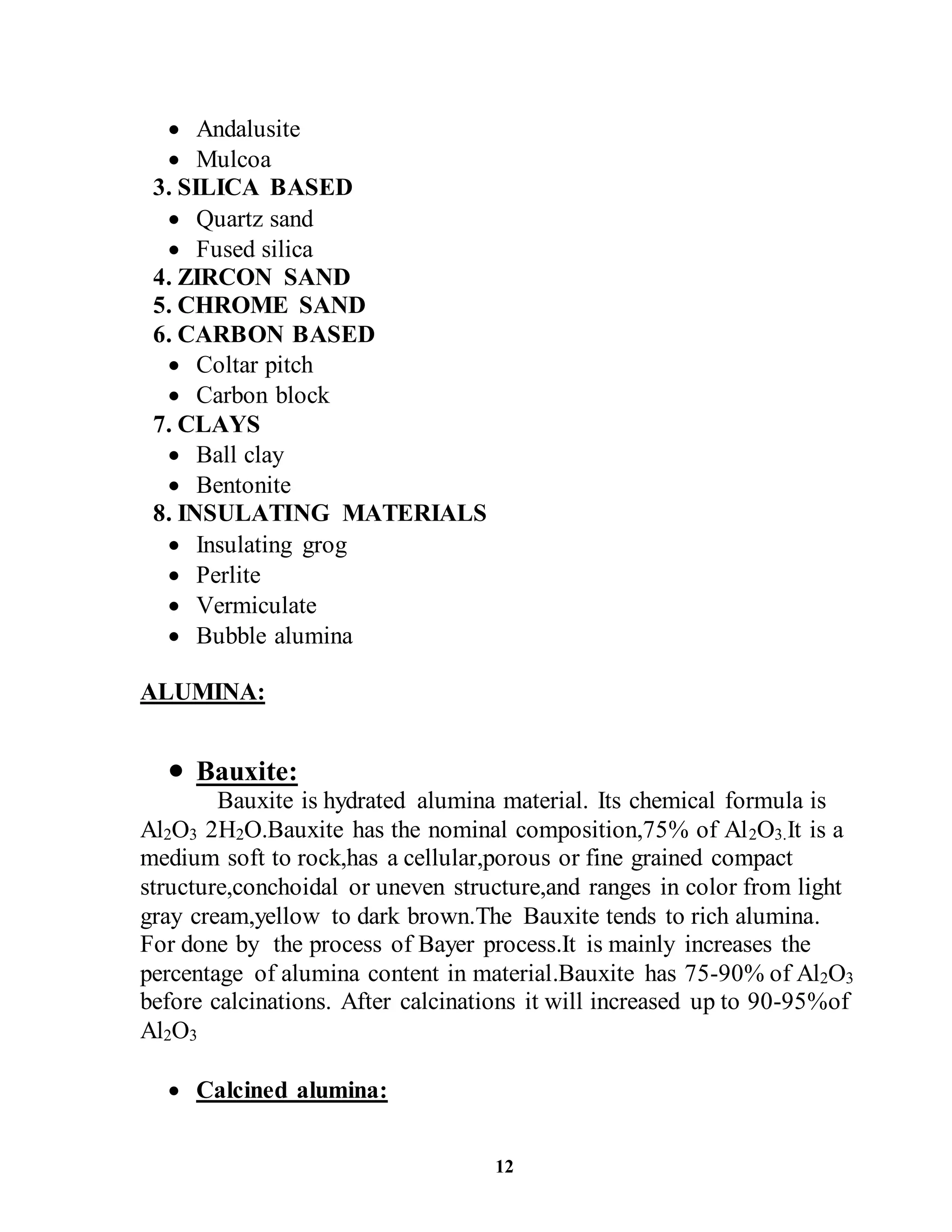
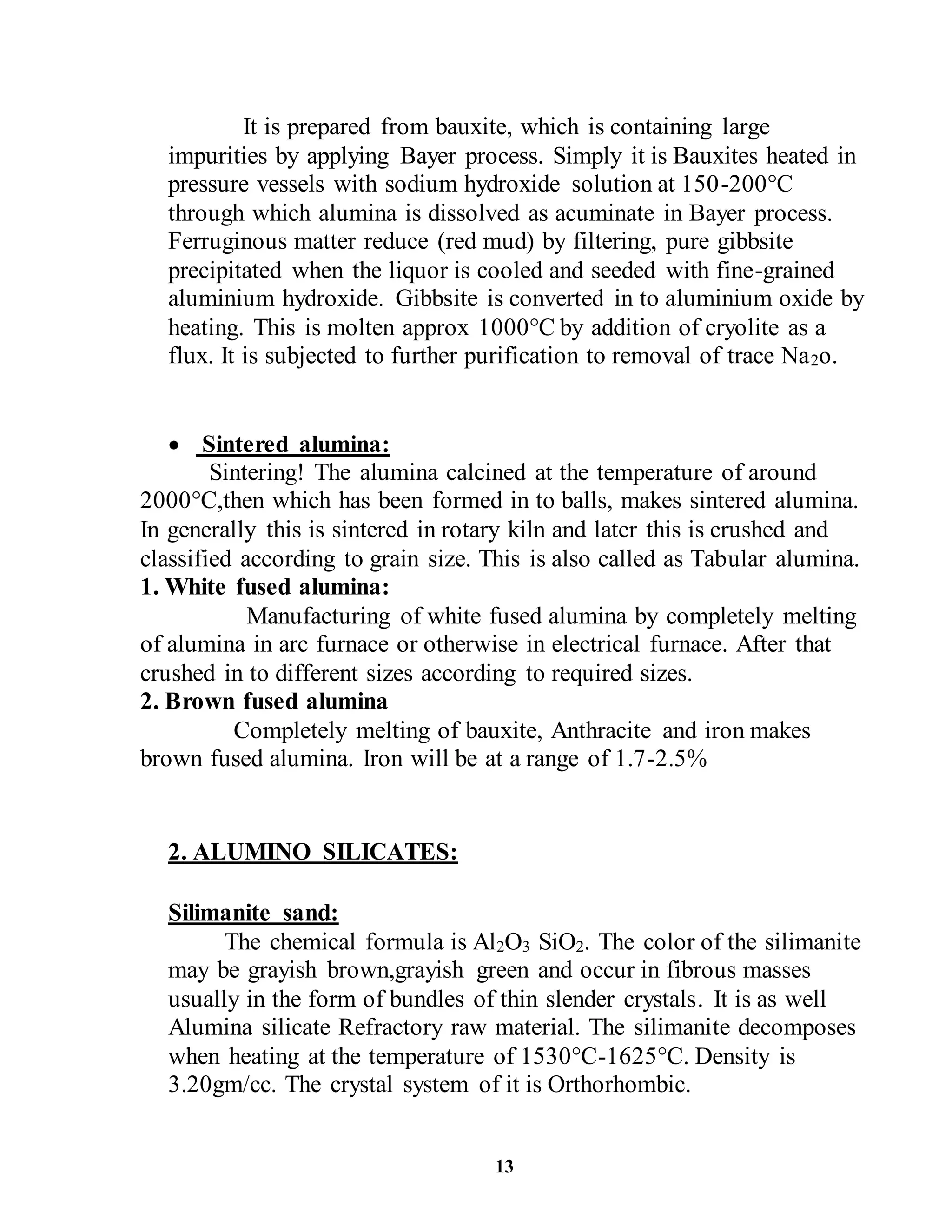
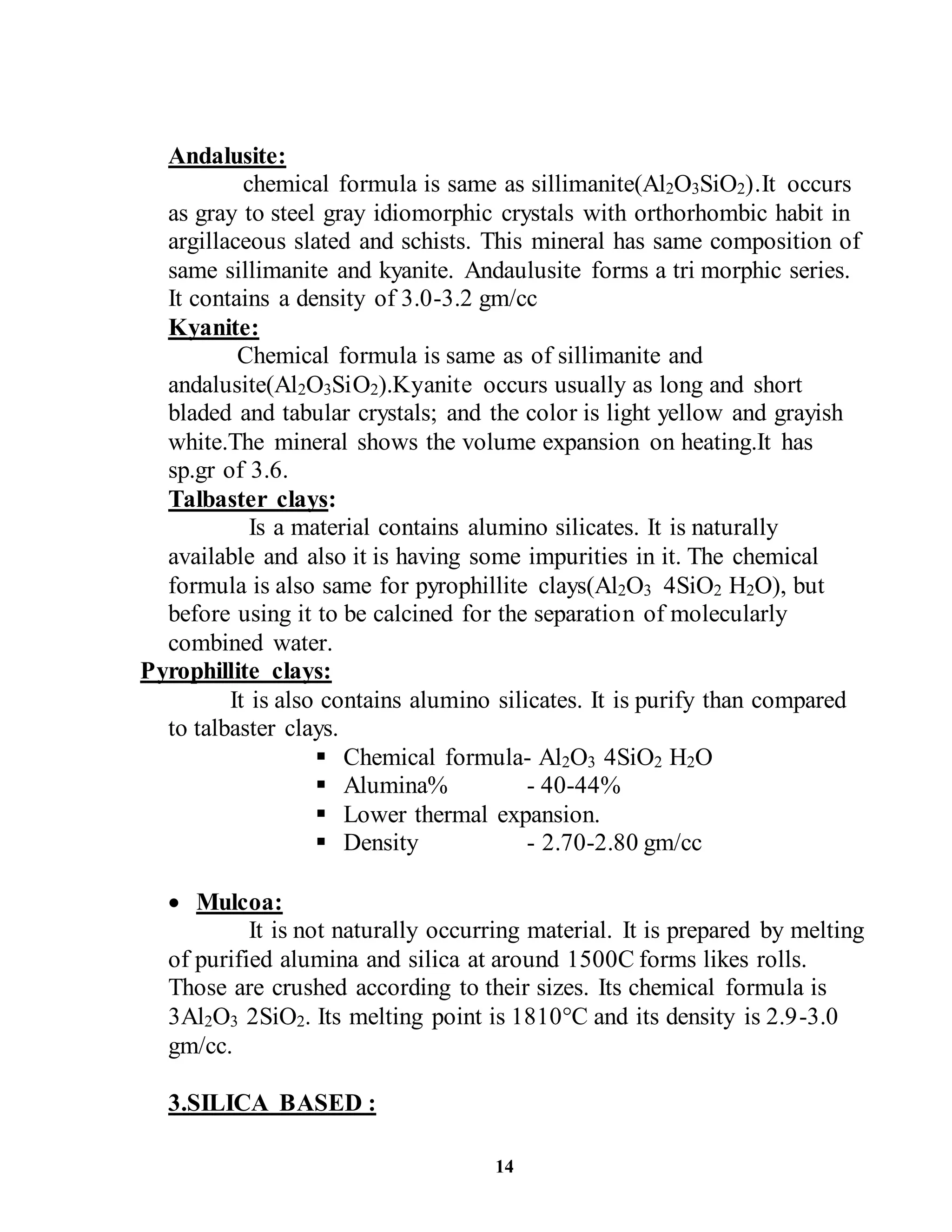

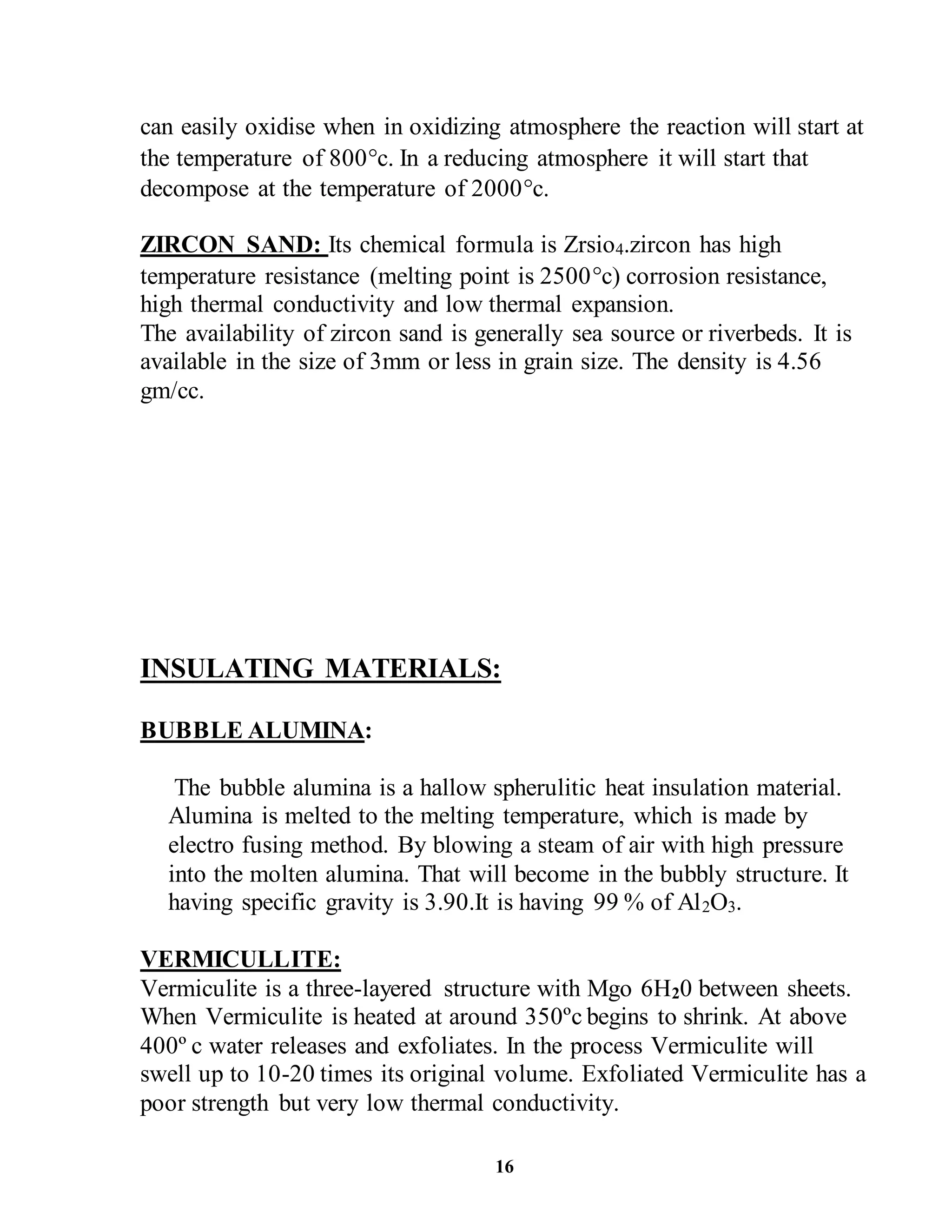










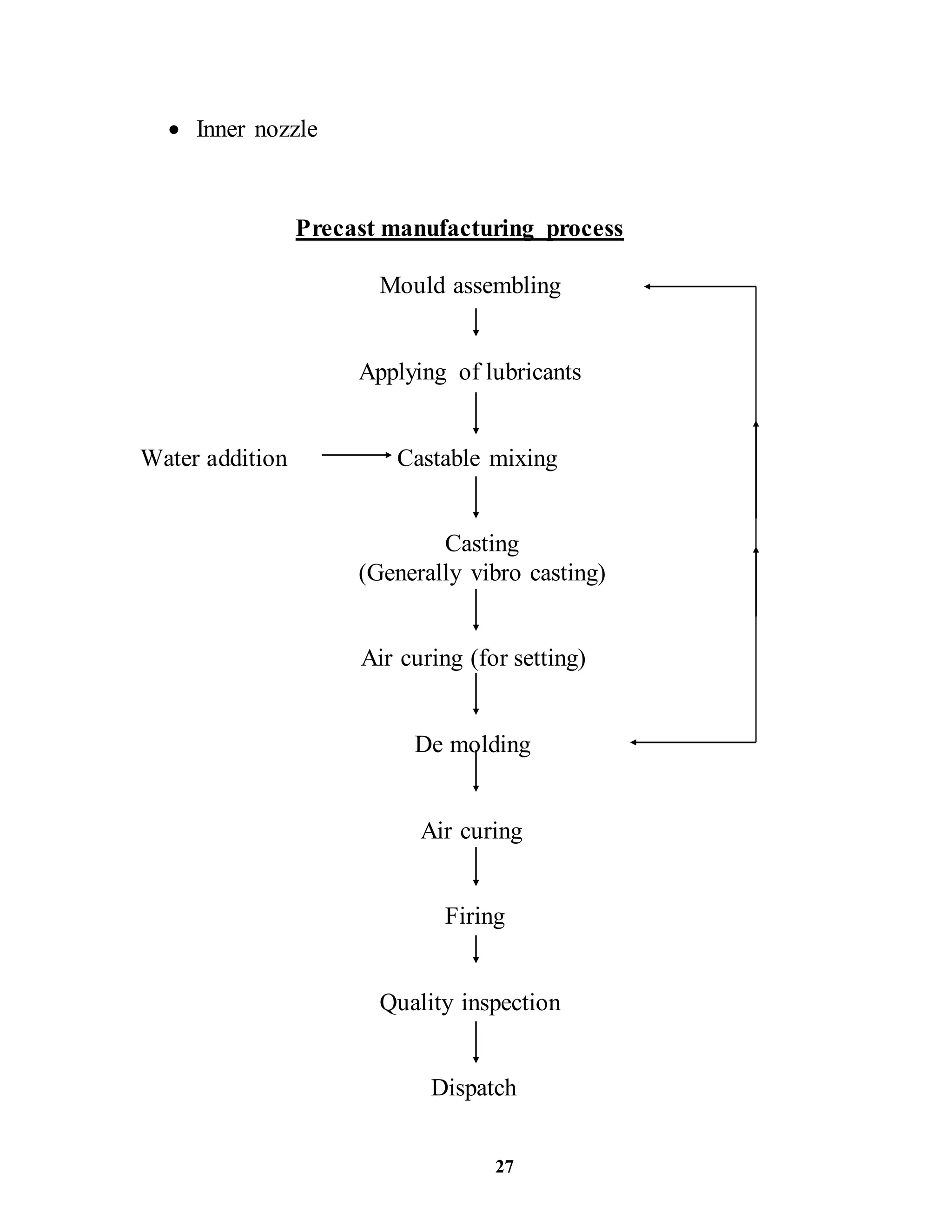




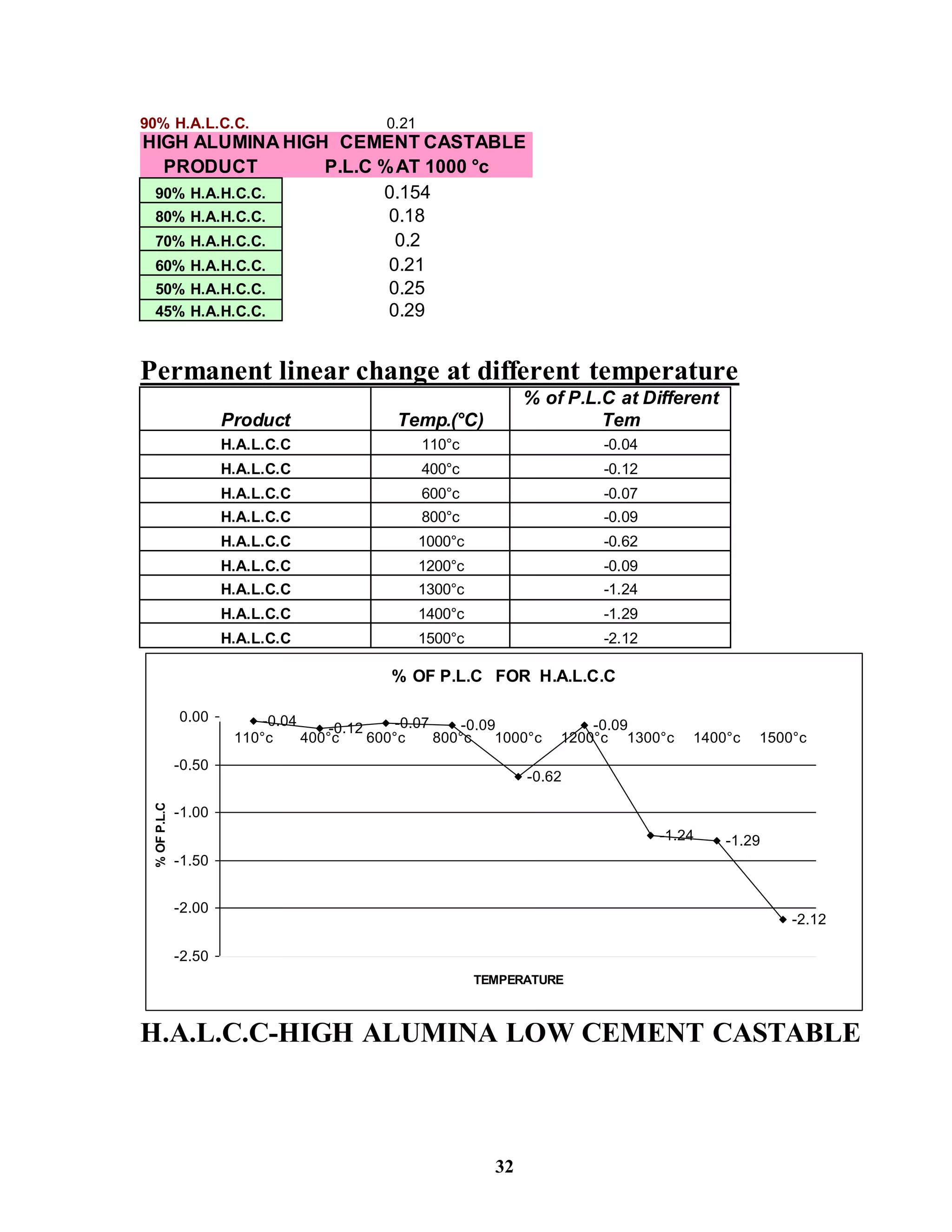
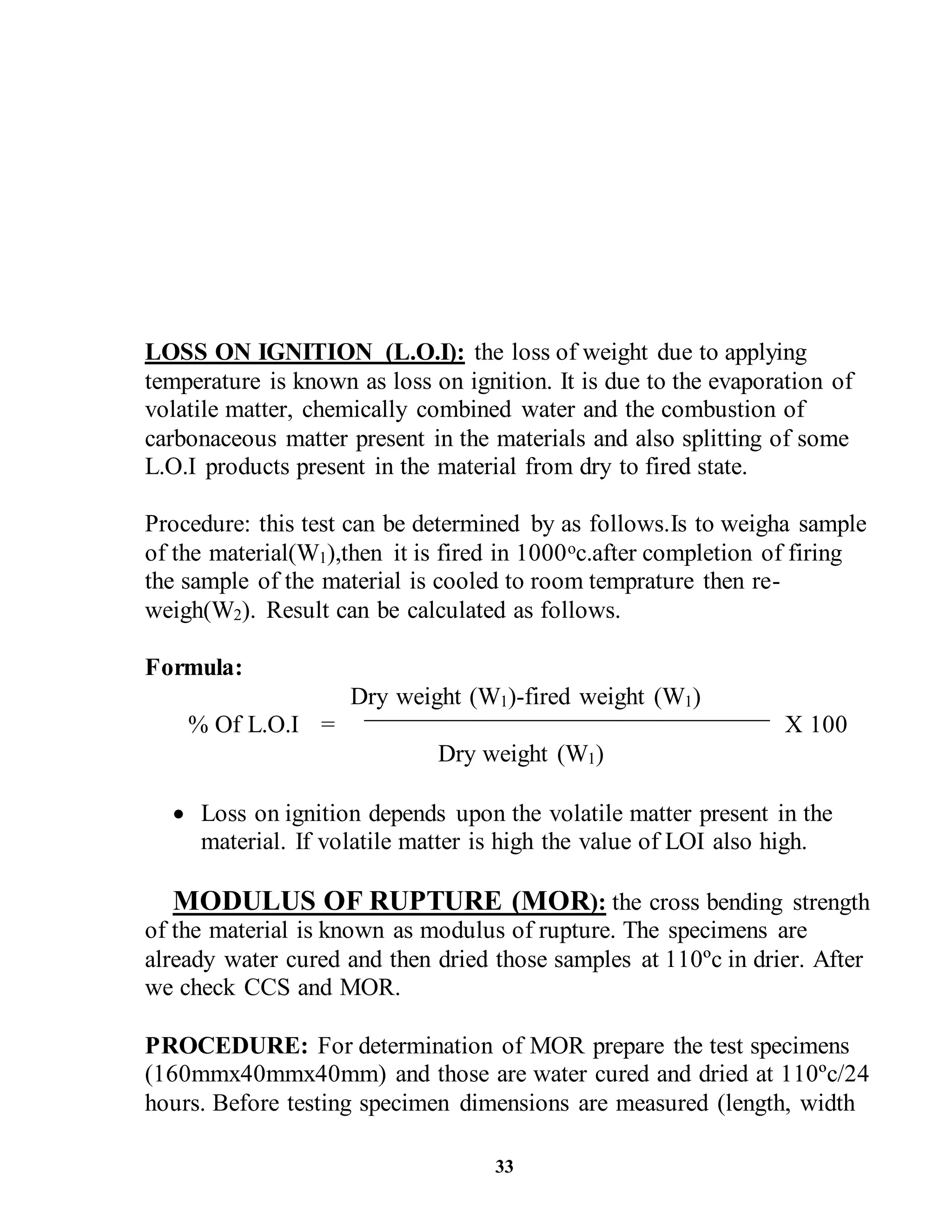

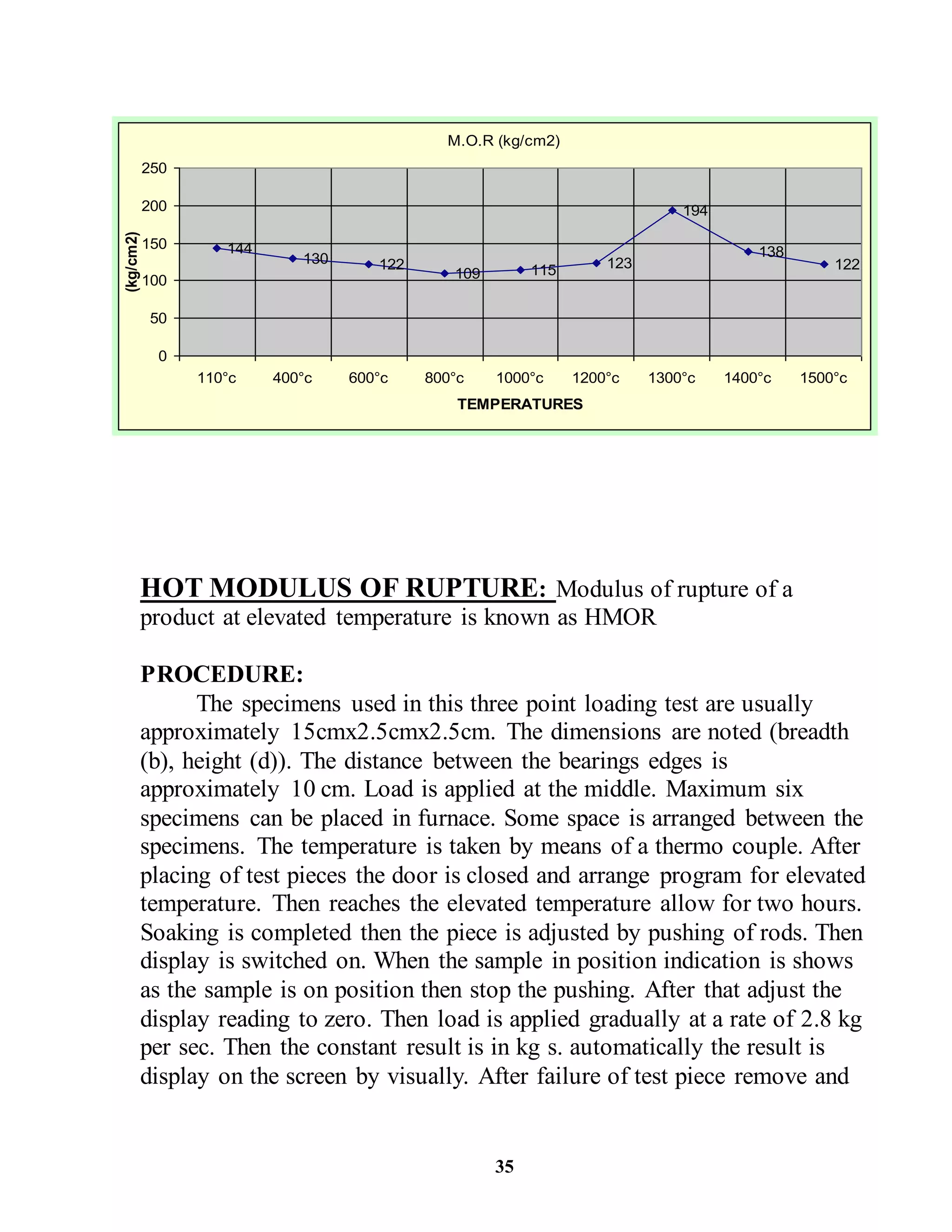
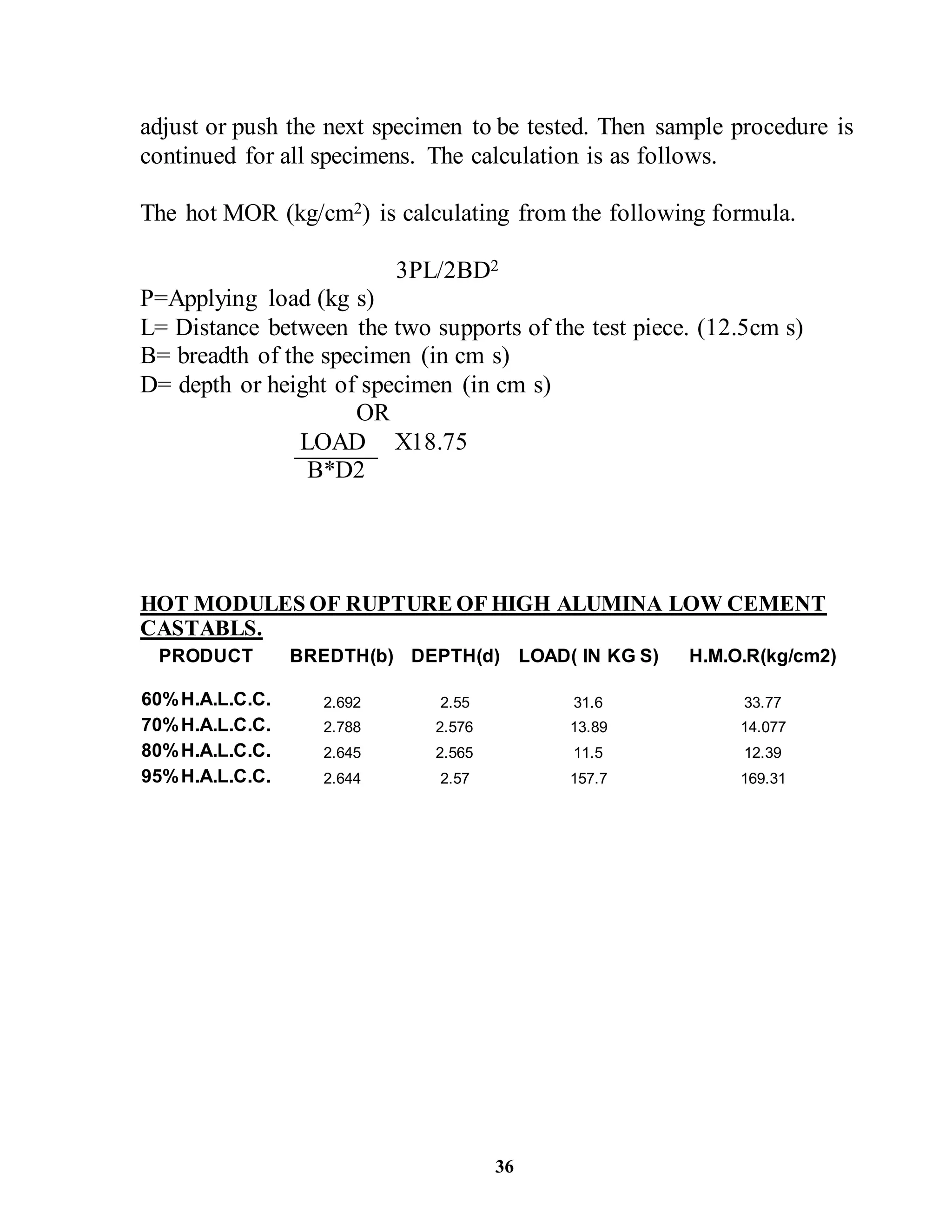




![41
CALCULATION:
Thermal conductivity = [q L/A (t1-t2)]
q= temperature difference between in let water temperature and
out let temperature of center calorimeter multiples with * the water flow
in to the center calorimeter in 1sec
L=thickness of the test slab in (cm)
A=area of the central calorimeter in cm2 (7.6*7.6=57.76)
t1= hot face temperature.
t2=could face temperature
t1-t2=temperature difference between the hot face and could face .
Thermal conductivity = [q L/A (t1-t2)] cal/cm/0c/sec
This valve converted in to K=W/m .k for converting we multiples
with 418.4 then we get result in watts per meter Kelvin.
Example for the calculation of this test by using insulation product:-
Thermal conductivity =q l/A (t1-t2) value in cal per sec/cm x *c
q =temperature difference between in let and out
let water x water flow into the centre calorimeter in 1sec.
TCO=In let water 32.3*c.
TW= out let water 33.7
Tem .difference =1.4
Water flow in center calorimeter per minute =190
q =1.4 x190/60
q =4.43
Thickness of the sample is 5.14 in cm s.
Area of the calorimeter 7.6 x7.6 =57.76 in cm s.
t 1=hot face temperature 516*c
t 2=could face temperature 94*c
t= (t1 –t2) = 422*c
T.C= 4.43 X 5.14 / 57.76 X 422
T.C=0.0009342 in cal x sec/cm x *c.
This value converts into K= W/m. k in watts per meter Kelvin.
The conversion factor from cal x sec/cm x *c to W/m. k is 418.4.
T.C in (W/m. k) =0.0009342 x 418.4
Thermal conductivity in (W/m. k) =0.39 W/m. k](https://image.slidesharecdn.com/p-211005103926/75/Vesuvius-Project-report-Monolithic-refractories-41-2048.jpg)
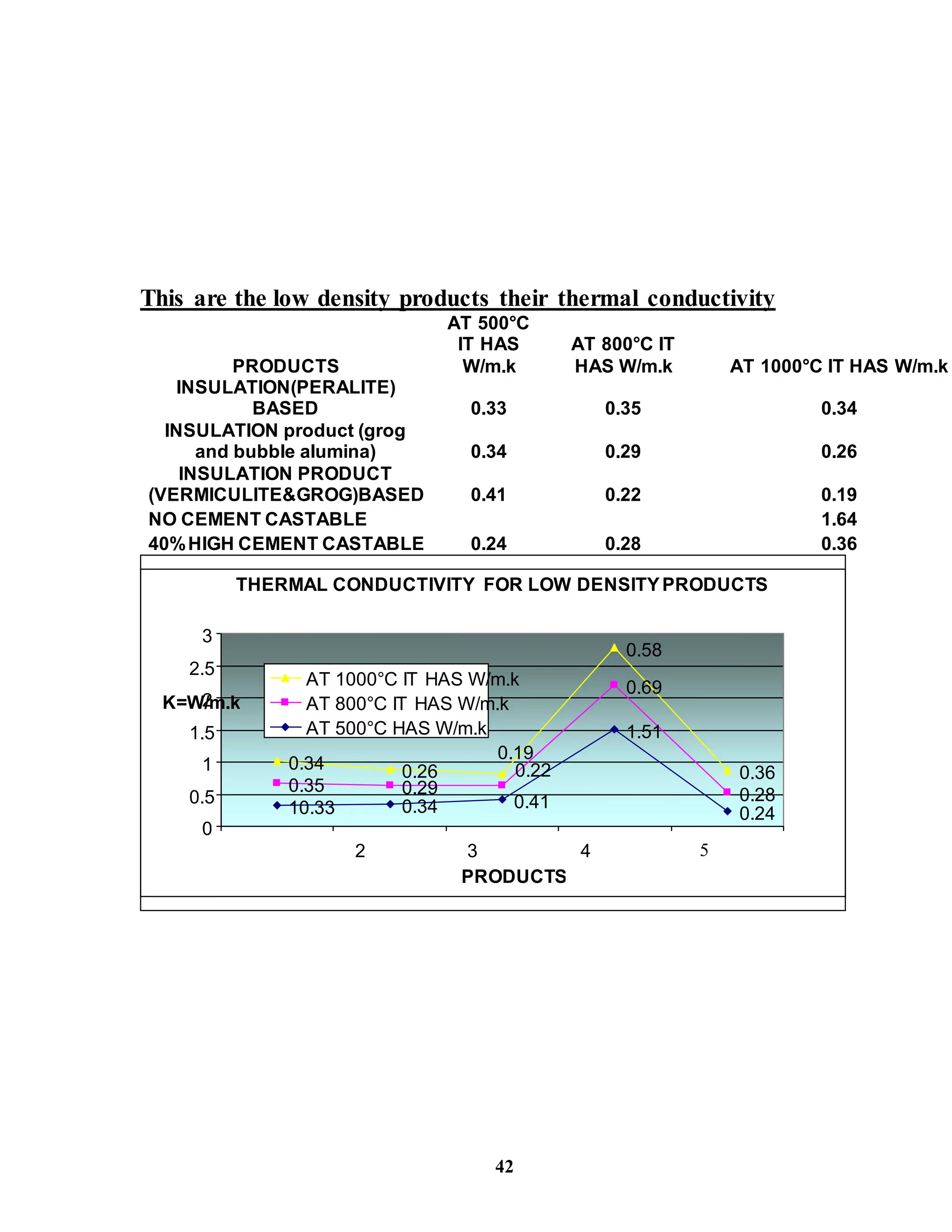

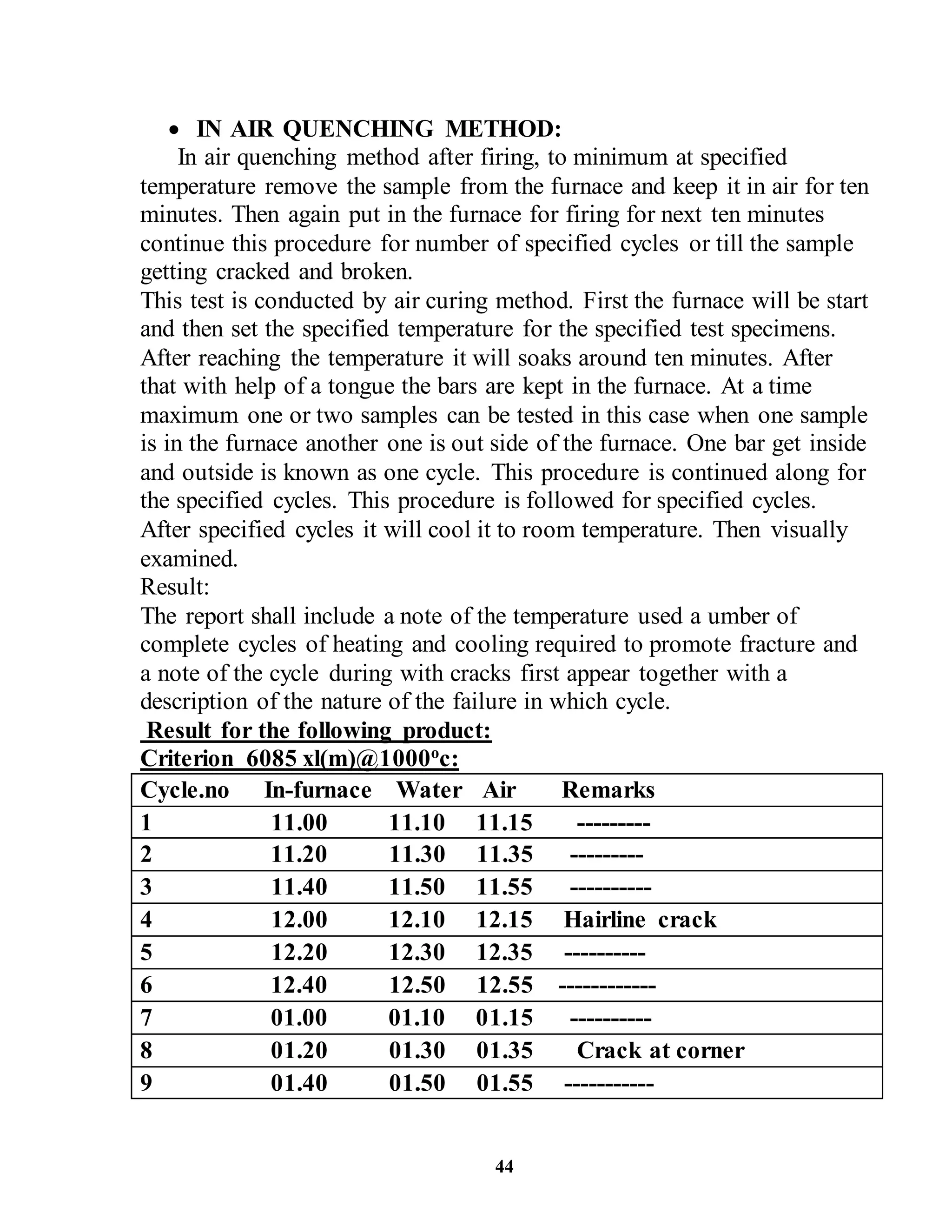
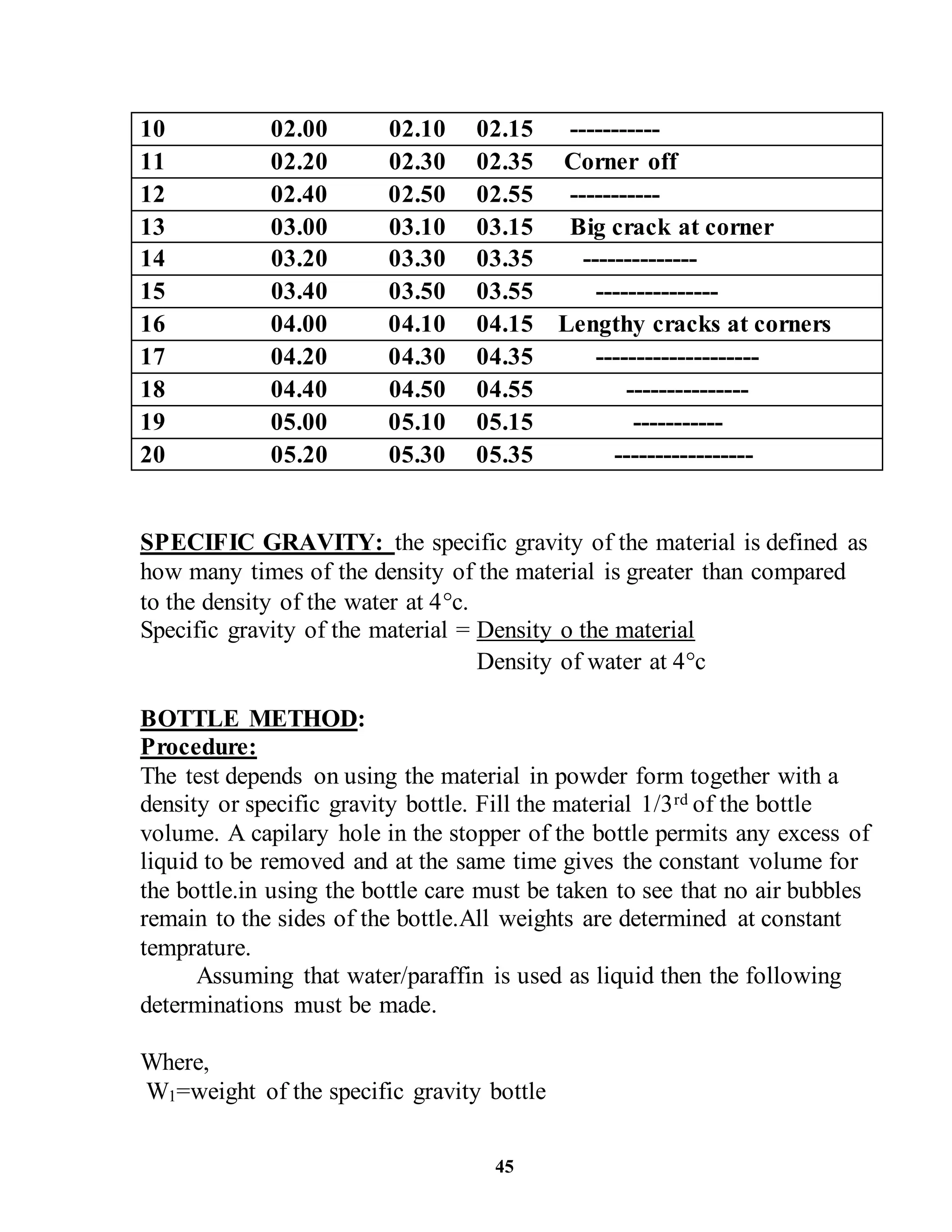



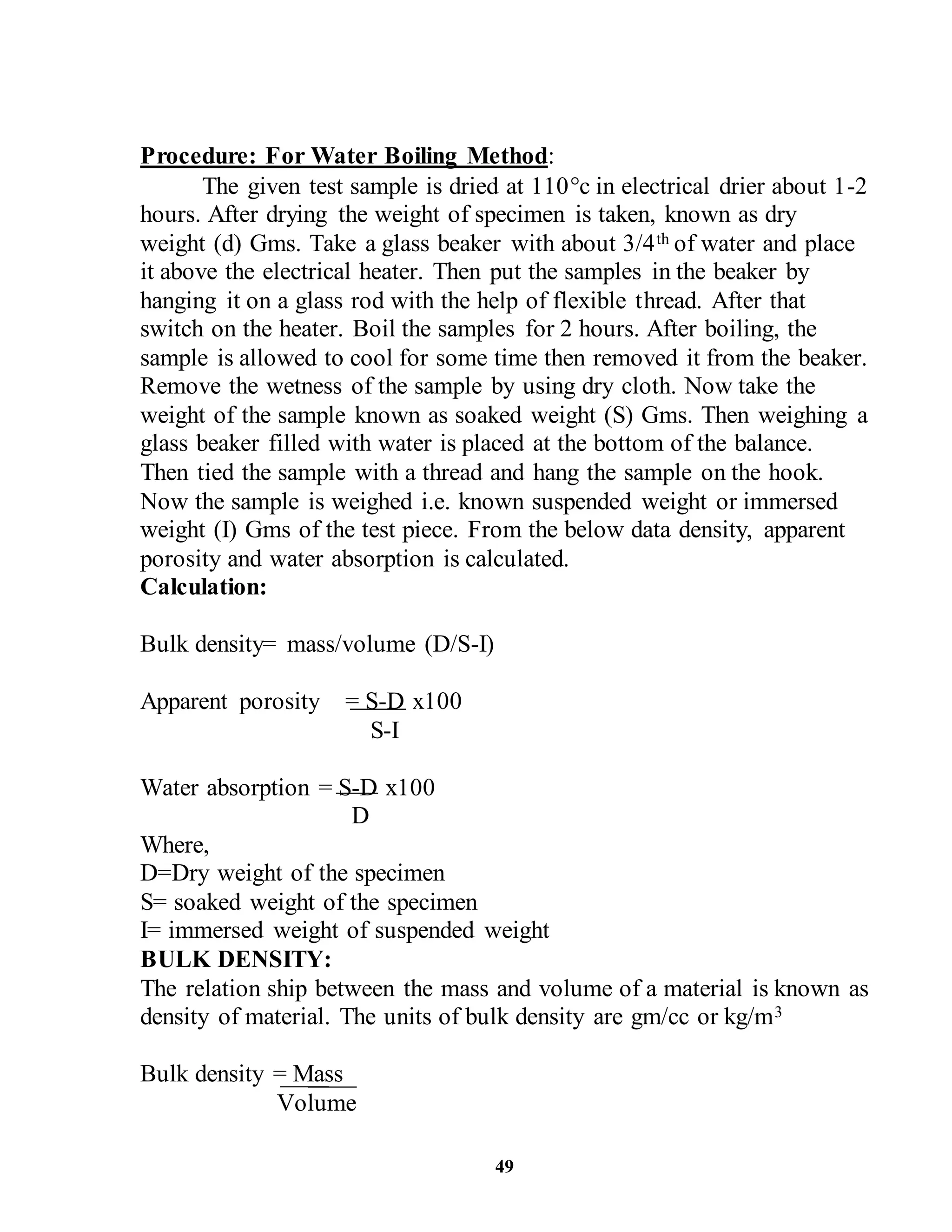





![55
After complete that grains stop that air pressure then open that
chamber door and receive the test finished sample then we take
finial weight of the test piece.
By using density and initial and finial weights we can calculate
the abrasion resistance result of test piece by as follows
calculation.
CALCULATION:-
A= [(W1-W2)/B]; A=W/B
Hear…
A=abrasion index in cc (cubic centimeter)
W1=initial weight of the test piece.
W2=finial weight of the test piece.
W=weight loss in (gm).
B=bulk density of the test specimen (gm/cc).
ABRASION RESISTANCE OF LOW CEMENT CASTABLE
AT 1000OC
PRODUCT ABRASION INDEX
CRITERION 6070M- 8.01
CRITERION 6070M- 7.01
CRITERION 6070L- 6.81
CRITERION 80 D- 3.72
CRITERION 6085 XL (M)- 3.60
CRITERION 80 DR- 4.53
CRITERION 6060 AS- 5.53
THERMAL EXPANSION TEST PROCEDURE:-
Revisable Thermal explanation means how much expand
and contract the test body while firing at high temperatures.
For testing these properties hear we use vertical dilatometer.
This test is totally processing based on the personal
computer and dilatometer.
The test piece shape has like a small rod the diameter of test
piece has 3.8mm and length of the specimen has 114mm.](https://image.slidesharecdn.com/p-211005103926/75/Vesuvius-Project-report-Monolithic-refractories-55-2048.jpg)


